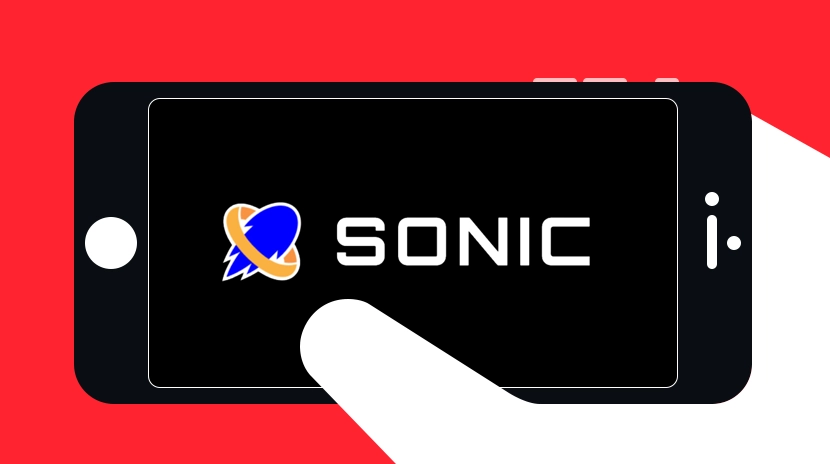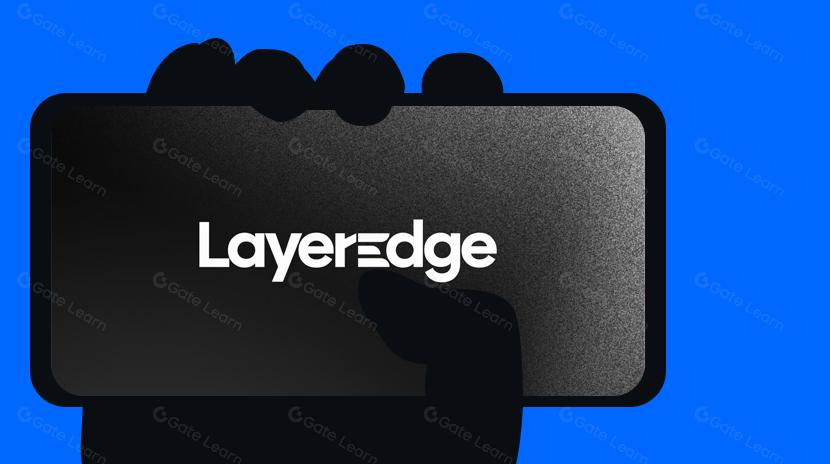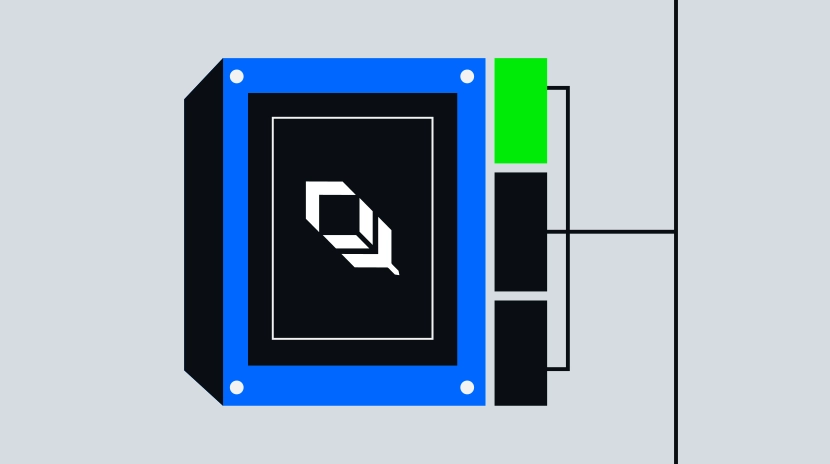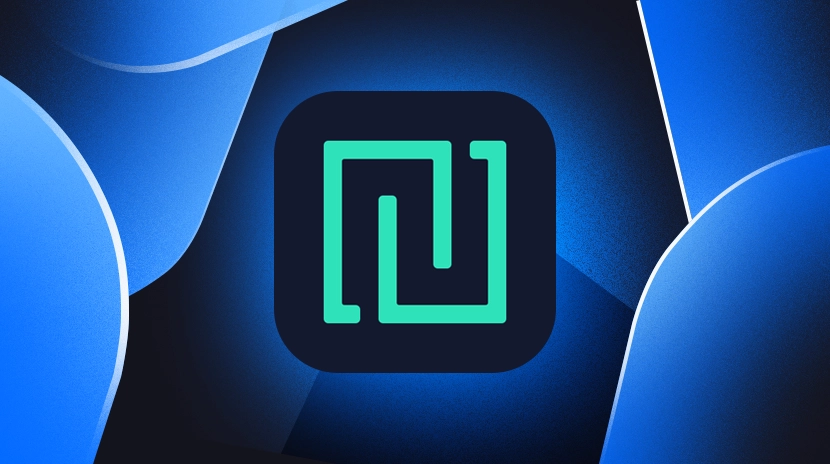Глибоке дослідження останньої білокартки Reddio
Огляд
По мере развития технологии блокчейн, Ethereum, выступая в качестве основы для смарт-контрактов и децентрализованных приложений, все чаще выявляет свои узкие места в производительности. Медленная скорость транзакций, высокие газовые сборы и ограниченная масштабируемость препятствуют его потенциалу для масштабного принятия.
Рішення 2-го рівня виникли, щоб вирішити ці виклики, при цьому Reddio видається провідним претендентом. У своєму останньому білому папері Reddio презентує інноваційну паралельну архітектуру Ethereum Virtual Machine (EVM), яка інтегрує автоматизований штучний інтелект та технології нульового доказу, маючи на меті впровадити нову життєву силу в екосистему Ethereum.
Що таке Reddio?
Reddio - це високоефективне рішення другого рівня (L2), сумісне з Ethereum, яке використовує технологію нульового знання для здійснення обчислень великого масштабу з утриманням рівня безпеки Ethereum. Воно забезпечує інфраструктурну підтримку для веб-застосунків, ігор та підприємств. Наразі перебуваючи на етапі тестування, Reddio доступний для пробного використання.
Reddio має на меті покращити продуктивність блокчейну, зберігаючи повну сумісність з екосистемою Ethereum. Він підтримує байткод EVM та API Ethereum RPC, що дозволяє безшовну інтеграцію з існуючими інструментами, такими як Hardhat, MetaMask і Etherscan, а також всіма децентралізованими додатками (dApps) на основі Ethereum.

Джерело:https://www.reddio.com/
Технічна архітектура
Останній білий папір Reddio надає докладне пояснення його технічної архітектури з наступними ключовими компонентами:
Паралельний EVM: Прорив у проблемах продуктивності
Традиційна Ethereum Virtual Machine (EVM) розроблена для послідовного виконання, де транзакції обробляються по одній за раз в порядку. Це забезпечує консистентність стану, але це неефективно за умов високого навантаження. Запропонована Reddio паралельна EVM використовує можливості багатоядерної обробки сервера, дозволяючи транзакціям у межах одного блоку оптимістично розподілятися по кількох потоках для паралельного виконання.
Технічна реалізація: мережа виконання Reddio побудована на вузлах GPU. Вона використовує CUDA, паралельну обчислювальну платформу NVIDIA, для перетворення опкодів EVM в обчислювальні завдання, які можуть ефективно виконуватися на GPU. Крім цього, Reddio впроваджує оптимізацію асинхронного введення/виведення, покращене управління доступом до стану та технології оптимістичного контролю конкурентності (OCC), щоб забезпечити, що паралельне виконання не призводить до конфліктів стану.
Переваги: Ця архітектура значно збільшує пропускну здатність транзакцій, знижуючи витрати на транзакції.

Джерело:https://www.reddio.com/
Прискорення GPU
Прискорення GPU є однією з основних функцій високопродуктивного рішення Layer 2 (L2) Reddio, реалізованого через проект CuEVM у співпраці з Національним університетом Сінгапуру. Воно використовує технологію CUDA від NVIDIA для перетворення опкодів віртуальної машини Ethereum (EVM) в паралельні обчислювальні завдання, які виконуються на GPU, що значно підвищує ефективність та масштабованість виконання розумних контрактів.
Ключові характеристики включають: тисячі ядер GPU дозволяють масштабну паралельну обробку, що драматично збільшує пропускну здатність і робить його добре підходящим для високонавантажених додатків; оптимізовані ядра CUDA забезпечують ефективні обчислення та скорочують час, необхідний для складних завдань; архітектура масштабована, з покращенням продуктивності при додаванні більше GPU; переклад завдань на GPU допомагає знизити затримку та витрати; CuEVM також підвищує управління пам'яттю для зниження затримки та підвищення ефективності. Як основний учасник CuEVM, Reddio інтегрує цю технологію для забезпечення високопродуктивної виконавчої потужності смарт-контрактів, сумісних з Ethereum.

Джерело:https://www.reddio.com/
Зручність для розробників
Reddio надає всесвітньо доступний хмарний API, який спрощує складність взаємодії з кількома блокчейнами. Згідно з білокнигою, його метою є зробити розробку блокчейну доступною навіть для розробників Web2. Цей дизайн знижує технічний бар'єр і допомагає залучити більше розробників в екосистему Ethereum.
Модульний послідовник
Модульний секвенсор Reddio написаний на мові програмування Golang і побудований на модульній платформі Yu, що пропонує високу гнучкість налаштувань. Він підтримує безшовну інтеграцію з різними віртуальними машинами (такими як EVM, Solana VM та MoveVM) та різними шарами доступності даних (такими як Ethereum та Celestia).
Основні функції включають: модульну настроювання, високу продуктивність (забезпечення надзвичайно високої TPS за різних умов), міжплатформену взаємодію dApp (підтримка взаємодії з низькою затримкою та низькими комісіями за газ), та спеціалізований протокол згоди Layer 2, який забезпечує високу пропускну здатність, одночасно успадковуючи властивості безпеки та децентралізації Layer 1.

Джерело: https://docs.reddio.com/zkevm/sequencer
Технічні особливості
CuEVM:
Відображає опкоди EVM на ядра CUDA, використовуючи паралельну обробку GPU для прискорення виконання смарт-контрактів при оптимізації управління пам'яттю та обчислювальної ефективності.
Модульний секвенсер:
Підтримує інтеграцію з кількома віртуальними машинами (VMs) та шарами доступності даних (DA). Розробники можуть налаштовувати протоколи консенсусу (наприклад, PoW або PoS), що робить його придатним для високопродуктивних додатків та взаємодії між ланцюгами.
Паралельний EVM:
Дозволяє паралельну обробку транзакцій на рівні 2. Вона працює разом з stateDB для управління глобальним станом, адресуючи обмеження традиційного послідовного виконання.
Інформація про фінансування
Перший раунд фінансування Reddio очолив провідний венчурний капітал Paradigm, з участю Arena Holdings та Tiger Cub Fund, хоча точна сума фінансування не була розкрита.

Джерело: https://www.rootdata.com/Projects/detail/Reddio?k=MjA5NA%3D%3D
Дорожня карта
Нижче наведено деякі ключові моменти з дорожньої карти Reddio, засновані на її траєкторії розвитку та технічних цілях:
Короткострокові цілі (тестова мережа, запущена в початку 2025 року)
Запуск тестової мережі та оптимізація
Reddio офіційно запустив свій публічний тестовий мережу 16 січня 2025 року (як повідомляє CryptoPotato), відзначивши значний крок у своєму розвитку. У короткостроковій перспективі увага зосереджена на вдосконаленні функціоналу тестової мережі, зборі відгуків розробників та оптимізації продуктивності паралельної EVM з підтримкою GPU та модульного послідовника.
Інтеграція штучного інтелекту та блокчейну
Тестова мережа підтримує вбудоване в ланцюжок штучне інтелектуальне висновок, використовуючи архітектуру з прискоренням GPU для покладення фундаменту для автономних систем штучного інтелекту. Початковою метою є підтвердження можливості децентралізованих застосунків, які працюють на основі штучного інтелекту (dApps), таких як автоматизована фінансова торгівля або багатоагентні системи.
Розвиток екосистеми розробників
Reddio пропонує модульний SDK послідовника для спрощення розгортання ланцюгів додатків OP/ZK, що спонукає розробників експериментувати та будувати високопродуктивні додатки. Метою є покращення користувацького досвіду за рахунок зниження комісій за газ та підвищення пропускної здатності.
Середньострокові цілі (середина до кінця 2025 року)
Покращення продуктивності та розширення екосистеми
Оптимізація паралельного EVM: Подальше покращення можливостей паралельної транзакцій, з потенційною кількісною оцінкою показників ефективності (наприклад, досягнення десятків тисяч TPS). Зусилля будуть спрямовані на вирішення проблем конфлікту стану під час паралельного виконання.
Оновлення прискорення GPU: На основі CuEVM може бути інтеграція більш передових технологій GPU (наприклад, останніх архітектур від NVIDIA) або оптимізація ядер CUDA для підтримки більш складних обчислювальних завдань.
Підтримка кількох ВМ: модульний послідовник розширить свою сумісність, щоб включити більше віртуальних машин (наприклад, Solana SVM, zkWASM, RISC0, MoveVM), що дозволить широку взаємодію між крос-ланцюжковими екосистемами.
Децентралізація та безпека
Перехід до повністю децентралізованої рамки послідовності (наприклад, перехід від Доказу Авторитету до власного механізму консенсусу на рівні 2) для підвищення безпеки мережі.
Посилити заходи проти MEV (Максимально Екстрагованої Вартості), використовуючи докази з нульовим знанням, щоб краще захистити користувачів DeFi.
Розширення додатка
Підтримка розвитку ланцюгів додатків рівня 3 з оптимізацією продуктивності для випадків використання з низькою затримкою, таких як геймінг та реальний час торгівлі. Це подальше стимулюватиме глибоку інтеграцію технологій штучного інтелекту та блокчейн.

Джерело: https://points.reddio.com/?invite_code=CTJPM
Довгострокові цілі (2026 року та пізніше)
Розгортання основної мережі
Після досягнення стабільності на тестовій мережі проект запустить свою mainnet і офіційно стане найвисокоефективнішим паралельним рішенням zkEVM Layer 2 в екосистемі Ethereum. Ціль полягає в наданні низькозатратного, високопропускного виробничого середовища.
Глобальна емпауермент розробника
Проект спростить процес включення розробників Web2, запропонувавши більш користувацькі зручні інструменти, такі як швидкі стартові рішення, які не потребують вивчення Solidity або Cairo.
Через ініціативи, такі як Програма Foundry, вона буде підтримувати інноваційні проекти у таких галузях, як штучний інтелект, децентралізовані фінанси та ігри на ланцюжку.
Зрілий Екосистема
Глибока інтеграція з Ethereum та іншими рішеннями L1/L2 (такими як Starknet та Celestia) сприятиме створенню міцної, взаємодійної екосистеми між додатками.
Візія «нульових газових витрат» (натхненна ініціативами, такими як Starknet L2) буде переслідуватися для зниження бар'єрів входу для користувачів та стимулювання масового прийняття.
Постійна інновація, що приводиться технологією та спільнотою
Відкритий код та співпраця
Reddio настійно підкреслює відкритий код (наприклад, фреймворк Yu та модульний SDK послідовника). У майбутньому внески спільноти можуть розширити функціональність, такі як додавання нових протоколів консенсусу або підтримка шару DA (доступність даних).
Механізми стимулювання
Проект приверне користувачів та розробників для участі в будівництві екосистеми через систему балів (включаючи стейкінг та балі на основі завдань) та розподіл токенів. Це поступово встановить модель управління у межах Фонду Reddio (оголошено 17 березня 2025 року).

Джерело:https://docs.reddio.com/zkevm/points
Виконавчі та виконавчі виклики
Основні технології Reddio теоретично можливі, але для реального впровадження потрібно вирішити кілька практичних викликів:
Паралельний EVM
Можливість: Reddio розподіляє транзакції та розумні контракти для багатопотокової паралельної обробки, використовуючи багатоядерні GPU та модель програмування CUDA. У поєднанні з Оптимістичним Контролем Збігу (OCC) та оптимізацією стану, цей підхід був перевірений у контекстах високопродуктивних обчислень.
Виклики: Архітектура EVM Ethereum має вроджено послідовний характер та сильно залежить від стану, вимагаючи точного управління консистентністю для запобігання конфліктів. Послідовна логіка складних смарт-контрактів може знизити паралельну ефективність. Якщо стійкість системи відсутня, це може призвести до невдач у транзакціях або фінансових втрат, як це було в проектах, подібних до Monad, які стикалися з затримками через схожі проблеми.
GPU-прискорений zk-Rollup
Реалізація: Паралельна обчислювальна потужність GPU прискорює генерацію доказів нуль-знання, знижуючи витрати і збільшуючи пропускну здатність - узгоджуючись з напрямком проектів, таких як zkSync.
Виклики: Високі обчислювальні вимоги можуть призвести до централізації вузлів, ослаблюючи децентралізацію. Крім того, GPU мають високу енергоспоживання та піддаються ризику розриву ланцюга поставок (наприклад, дефіцит мікросхем), що може впливати на операції та стійкість мережі. Процес оптимізації також може призвести до появи помилок або вразливостей безпеки.

Джерело: https://www.techrepublic.com/article/global-chip-shortage-cheat-sheet/
Економічна життєздатність та ринкова конкурентоспроможність
Реальне впровадження Reddio повинно продемонструвати економічну цінність та прорватися через ринкову конкуренцію:
Економічні переваги та ризики
Переваги: Паралельний EVM та zk-Rollup зменшують витрати на транзакції та збільшують пропускну здатність, роблячи їх відповідними для високочастотних сценаріїв, таких як DeFi та блокчейн-ігри. Розробницькі хмарні API, спрямовані на розробників Web2, можуть привернути розробників та допомогти розвивати екосистему.
Ризики: робота з вузлами на основі GPU вимагає вищих витрат та споживання енергії, ніж вузли на основі CPU, що потенційно може позбавити переваги низьких витрат. Розгортання інфраструктури потребує постійного фінансування (з Paradigm як провідним інвестором). Якщо токеноміка погано спроектована (наприклад, інфляційні моделі або контроверзії з розподілом), або якщо фінансування пересихає (наприклад, через спад ринку), довгострокова стійкість може бути під загрозою.
Ринкова конкуренція
Переваги: У порівнянні з Оптимістичними Ролапсами (наприклад, Arbitrum), zk-Rollups пропонують кращий досвід користувача завдяки відсутності періоду виклику. У відміну від zkSync, паралельний EVM та AI-орієнтована наратив пропозиція Reddio пропонують унікальну відмінність.
Ризики: Ринок Layer 2 переповнений, з домінуючими гравцями, такими як Arbitrum, які користуються перевагою першого руху, і zkSync, які є більш досвідченими в технології zk. Якщо міграція екосистеми та прийняття користувачами будуть повільними, Reddio може зіткнутися з «недоліком пізнього руху». Без реальних використання штучного інтелекту в житті, його AI наратив може бути сприйнятий як хайп та втратити тягу.
Виклики та ризики розгортання
Переходя від білого паперу до реальності, Reddio повинен подолати кілька перешкод:
Децентралізація та розподіл вузлів
Проблема: Високі апаратні вимоги до графічних процесорів можуть призвести до концентрації вузлів серед кількох сутностей, що підірве децентралізацію.
Ризики та пом'якшення: Якщо стимулюючі механізми (такі як токен-винагороди) або партнерства з хмарними постачальниками будуть недостатніми, мережа може зіткнутися з проблемами централізації, що підривають довіру користувачів. Для вирішення цього потрібно розробити стратегію розподіленого обчислення.
Тестування та перевірка
Проблема: Збільшена складність системи підвищує ризик помилок, таких як невідповідності стану або невдачі доказів.
Ризики та пом'якшення: Якщо дефекти виявляються на тестовій мережі, запуск основної мережі може бути відкладений, що підірве довіру спільноти. Проведення широкомасштабних стрес-тестів та аудитів є невід'ємним, беручи на взятку досвід від Polygon zkEVM.
Прийняття користувачів та розробників
Проблема: незважаючи на технологічну перевагу, без підтримки користувачів та розробників платформа лишається порожньою оболонкою. У короткостроковій перспективі впровадження штучного інтелекту залишається викликом.
Ризики та заходи мінімізації: Без достатніх стимулів (наприклад, хакатонів) або ключових партнерств (наприклад, з Uniswap) може виявитися важко масштабувати екосистему. Швидке нарощування користувацької бази є вирішальним.
Зовнішні ризики
Невизначеність регулювання: торгівля високої частоти та застосування штучного інтелекту можуть зазнати регуляторного контролю (наприклад, затвердження політики в США та ЄС), що призведе до збільшення витрат на дотримання вимог або обмежить операції.
Зміни в екосистемі Ethereum: Якщо Ethereum пройде оновлення (такі як PeerDAS), які значно підвищать продуктивність базового рівня, попит на рішення рівня 2 може зменшитися, що зменшить цінність Reddio.
Загрози безпеки: Складність паралельних систем EVM та zk-Rollup може внести нові площини атак (наприклад, атаки DoS або використання вразливостей). Наприклад, хакерська атака на Ronin, яка призвела до втрат понад $600 мільйонів, підкреслює потенційні ризики для коштів та репутації.

Джерело: https://x.com/VitalikButerin/status/1895863075527700959
Інтеграція Reddio паралельним EVM, zk-Rollup та штучним інтелектом демонструє величезний потенціал. Технічна можливість підтримується прискоренням GPU та паралельним обчисленням, в той час як економічна перевага полягає в низьких витратах та високій продуктивності.
Однак шлях до прийняття в реальному світі повний викликів: стан консистентності, централізація вузлів, операційні витрати, конкурентний тиск і зовнішні невизначеності можуть вплинути на його розвиток. Успіх буде залежати від виконавчих можливостей команди та управління ризиками. Інвестори та розробники повинні залишатися обережно оптимістичними та уважно відстежувати прогрес тестової мережі та розвиток екосистеми.
Аналіз конкурентного середовища
На ринку Layer 2 Reddio вирізняється унікальною нішою завдяки прискоренню GPU та інтеграції штучного інтелекту. Порівняно з традиційними гравцями, такими як Optimism і Arbitrum, його підхід є більш технологічно інноваційним.
Однак, щоб конкурувати з основними конкурентами, запущеними на mainnet, такими як zkSync Era і StarkNet, Reddio повинен прискорити розвиток екосистеми та підтвердити заявлені переваги продуктивності. Спостерігачам рекомендується звернути увагу на дані продуктивності тестової мережі та впровадження його mainnet.


Джерело:https://arbitrum.io/
Перспективи майбутнього
Як емержентне рішення другого рівня, сумісне з Ethereum, майбутні перспективи Reddio можна проаналізувати з кількох поглядів, включаючи технологічні інновації, позиціонування на ринку, розвиток екосистеми та тенденції галузі. Нижче наведено прогноз та перспективи майбутнього розвитку Reddio:
1. Технологічні перспективи
Паралельний EVM та прискорений потенціал GPU
Основну технологічну перевагу Reddio складає її конструкція zkRollup, яка включає паралельне виконання EVM та прискорення GPU, заявляючи досягти пропускної здатності до 12 000 TPS. Якщо ця продуктивність підтвердиться на mainnet, вона значно перевищить існуючі рішення Layer 2 (такі як 4 500 TPS Arbitrum або 2 000 TPS zkSync Era). З підвищенням попиту на високу продуктивність в екосистемі Ethereum технічна перевага Reddio може стати ключовим фактором у привертанні розробників та додатків.
Прорив в онлайн-інференції штучного інтелекту
Reddio нативно підтримує інференцію штучного інтелекту на ланцюгу, що є перспективною функцією в умовах зростаючої злиття Web3 та штучного інтелекту. При збільшенні попиту на децентралізовані застосунки штучного інтелекту, такі як NFT-генерація, ринки прогнозування та автоматизація розумних контрактів, Reddio може стати платформою вибору для розробників AI+dApp.

Джерело: https://x.com/reddio_com/status/1868631594543755535
Модульність
Модульний секвенсор Reddio надає гнучку інфраструктуру, спеціально розроблену для конкретних галузей, таких як геймінг, DeFi та соціальні застосунки. Якщо у майбутньому будуть представлені зрілі інструменти розробки та SDK, ця модульна можливість може привернути більше проєктів з вертикальних секторів.
2. Розвиток екосистеми
Перехід з тестової мережі на основну
Reddio перебуває на стадії публічного тестування (запущено в січні 2025 року). Основним завданням наступного року є успішний запуск мейннету та привернення першої хвилі розробників додатків. На основі досвіду StarkNet та zkSync, багатство екосистеми під час початкового періоду після запуску мейннету в значній мірі визначатиме ринкове визнання.
Партнерства та фінансова підтримка
З підтримкою провідних венчурних фондів, таких як Paradigm, Reddio має особливу перевагу в фінансуванні та ресурсах. Якщо вона зможе налагодити партнерство з провідними проєктами в екосистемі Ethereum (наприклад, Uniswap, Aave) або основними гравцями в галузі штучного інтелекту (наприклад, SingularityNET), її вплив на екосистему значно зросте.
Розбудова розробників спільноти
Розробницький підхід Reddio — підтримка Solidity та сумісність з API StarkNet — знижує поріг входу для розробників. У майбутньому привертання розробників через хакатони та програми надання грантів стане ключовою стратегією для розширення екосистеми.
3. Позиціонування на ринку та конкуренція
Різні конкурентні переваги
У рамках ринку Layer 2 Reddio вирізняється високою продуктивністю та штучним інтелектом. Порівняно з універсальним характером Optimism та Arbitrum або технологією на основі STARK StarkNet, фокус Reddio на високопродуктивних додатках, штучному інтелекті та іграх більше відповідає зростаючим вимогам. Якщо він зможе захопити цей нішевий ринок, його визнання бренду може швидко зрости.
Конкуренція серед zkRollups
Ера zkSync та StarkNet, як зрілі проекти zkRollup, мають перевагу першопрохідника. Reddio повинен продемонструвати вищу продуктивність (TPS, затримка) та швидше розгортання екосистеми, щоб прорватися в цьому конкурентному середовищі.
Потенційний тренд інтеграції 2-го рівня
У майбутньому може збільшитися потреба в міжопераційності або консолідації серед Шару 2 (наприклад, через між-Роллап місто). Якщо Reddio може бути одним із перших, хто підтримує міжопераційність з іншими рішеннями Шару 2, це подальше зміцнить його позицію на ринку.
4. Тенденції розвитку промисловості
Постійний попит на масштабованість Ethereum
Оскільки комісії за транзакції та затори продовжуються на основній мережі Ethereum, очікується подальше зростання прийняття рішень рівня 2. Високопродуктивний продукт Reddio має вигідне положення для задоволення цієї тенденції, особливо в сценаріях високочастотних транзакцій, таких як геймінг, NFT та DeFi.
Поєднання штучного інтелекту та блокчейну
Злиття штучного інтелекту та Web3 має стати основним трендом у 2025 році та пізніше. Підтримка AI on-chain Reddio може поставити його як піонера в цьому просторі, особливо на децентралізованих ринках обчислень та висновків, можливо ставши конкурентом для гравців, таких як Render Network.

Джерело: https://rendernetwork.com/
Регулювання та відповідність
При затвердженні глобального регулювання блокчейну Reddio повинен зосередитися на дотриманні вимог, таких як захист конфіденційності та суверенітет даних, поруч з технічним розвитком, щоб адаптуватися до майбутніх політичних ландшафтів.
Висновок
Інноваційна архітектура Reddio, яка поєднує паралельну технологію EVM з прискоренням GPU та модульними послідовниками, пропонує нове рішення для масштабованості Ethereum. Шляхом оптимізації продуктивності обробки транзакцій, зниження витрат та покращення зручності для розробників, Reddio прагне побудувати ефективну, безпечну та сумісну екосистему 2-го рівня.
Незважаючи на те, що на його шляху до впровадження в реальний світ залишаються виклики, включаючи децентралізацію, безпеку, регуляторні питання та ринкову конкуренцію, технічний потенціал і дорожня карта Reddio демонструють захоплюючу візію для майбутнього розвитку Ethereum.
Чи Reddio може зайняти позицію в просторі Layer 2 в кінцевому рахунку залежить від його здатності досягти технічних проривів і отримати ширшу підтримку від розробників та користувачів.
Пов’язані статті

Аналіз екосистеми Sonic SVM

Комплексний посібник з LayerEdge

Битва публічних ланцюгів: аналіз он-чейн даних та інвестиційної логіки ETH, SOL, SUI, APT, BNB та TON

Пояснення білого паперу мережі мінт: амбіції та майбутнє виключно NFT L2

Що таке мережа Plume


